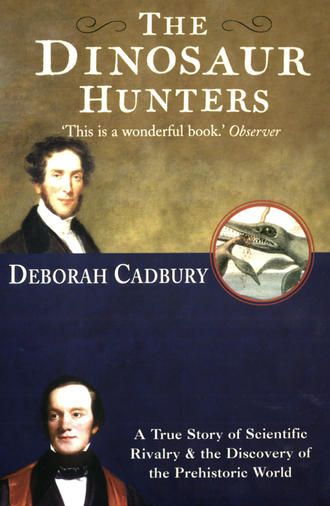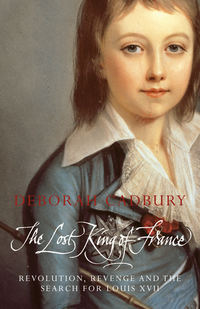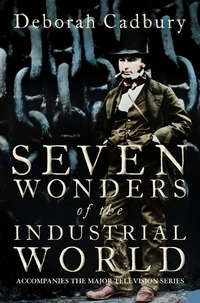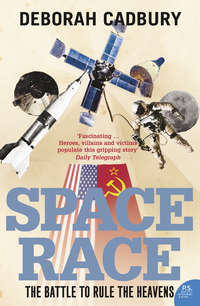
Полная версия
The Dinosaur Hunters: A True Story of Scientific Rivalry and the Discovery of the Prehistoric World
John Hunter was revered in England as the ‘father of modern surgery’ and had pioneered early studies of anatomy before his sudden death from a heart attack. Sir Everard was secretly plagiarising Hunter’s unpublished manuscripts. He had removed ‘a cartload’ of Hunter’s anatomical papers from the Royal College of Surgeons in London. Once he had copied them out in his own name, he allegedly burned Hunter’s originals. Such was his enthusiasm to demolish the evidence, on one occasion Sir Everard set fire to his own hearth and had to call out the fire brigade.
In his first paper to the Royal Society in 1814, Sir Everard initially favoured the idea that Mary Anning’s creature was some kind of crocodile. This was because he had noticed small germs of conical teeth contained within the larger teeth. Whereas mammals have just two sets of teeth, the milk teeth and the adult teeth, reptiles have replacement teeth growing through the jaw all their lives. But when Sir Everard split one of the teeth open, he mistook the young germ tooth inside for an accumulation of calcareous minerals. ‘The characteristic mark therefore, of a crocodile’s teeth,’ he wrote, ‘was thus removed.’ He wrongly concluded that it was not a reptile.
Then he reasoned that it must be an enormous aquatic bird, since the pattern of openings in the skull of the creature was similar to that of birds. The bones of the eye, he wrote, ‘subdivided into thirteen plates, which is only met in birds’. But if it was a bird, where were the wings, and why so many fish-like characteristics? Sir Everard considered that the lower jaw of the skull ‘admits the mouth to be opened to a great extent … resembling the voracious fishes’. New specimens revealed the ‘bird’ had paddles for swimming, and he decided the creature belonged to the class of fishes; although, somewhat baffled, he wrote, ‘I by no means consider it wholly a fish.’
After his initial uncertainty over whether the beast should be classed as reptile, bird or fish, by 1819 Sir Everard thought he had solved the puzzle. A new creature called a ‘Proteus’ had just been described in English by a Viennese physician. This was a blind, amphibious, serpentine creature with very unusual anatomical features that inhabited caves. Mistakenly guessing that the Lyme ‘crocodile’ was a link between the Proteus and lizards, he named it ‘Proteosaurus’, or ‘Proteus-lizard’. However, the year before, Mary Anning’s creature had been sold to the British Museum, where the Keeper of Natural History, Charles Konig, had named her animal ‘Ichthyosaurus’, meaning ‘fish-lizard’. This was in recognition of its curious mixture of fish and reptile characteristics. Since this name had been put forward first, it had priority over any other. Sir Everard Home was furious, and he continued to promote his own rival name, ‘Proteosaurus’.
In all this confusion, one thing was clear: the French were laughing at the English grasp of anatomy. Joseph Pentland, in Cuvier’s laboratory, scoffed at the papers of the ‘London Baronet’, as he called Sir Everard. He wrote to William Buckland in Oxford saying that Sir Everard’s ‘ridiculous’ papers were ‘abstruse, incomprehensible and for the most part, uninteresting’. What is more, the London Baronet was ‘crowding’ the Philosophical Transactions of the Royal Society, the prestigious journal of the oldest scientific society of Europe, blocking the publications of others whose work was more ‘worthy and honourable’.
Possibly because Sir Everard dominated the Royal Society, Buckland’s friends, the Reverend Conybeare and another enthusiastic young geologist, Henry de la Beche, prepared their detailed scientific paper on Mary’s creature for the Geological Society. They gathered many more specimens from Lyme and the Bristol area and were also able to capitalise on the anatomical expertise of the French. ‘I am sure that the fossil approaches much nearer to the family of Saurians [lizards],’ wrote Pentland to Buckland in 1820. ‘The dentition of the Ichthyosaurus is the same as in lizards.’
Conybeare and de la Beche published their findings in 1821. In agreement with the French, they showed that the teeth of the animal bore more resemblance to those of a crocodile than to any other creature. The replacement cycle of teeth so characteristic of a reptile, with ‘the young tooth growing up in the interior cavity of the old one,’ wrote Conybeare, ‘is exactly similar’. The bones of the skull were also lizard-like, with two openings at the back behind the eye, lightening the skull and allowing the muscles of the jaw to bulge so that it could work more efficiently. In the lower jaw alone, all the bones that Cuvier had identified in a crocodile could also be seen in this animal.
There were, however, some differences between Mary’s fossil and a crocodile skull. The teeth, Conybeare observed, ‘are more numerous than in the crocodile, there cannot be less than 30 a side’. The huge round eyes were larger in proportion to the skull than the eyes of any other known animal. Having no eyelids, to prevent injury in a rough sea, it had instead many thin, flexible bones encasing the pupil to protect it. The general shape of the jaw, he thought, ‘differs from the crocodile in being much more lengthened’, and ending in a point ‘almost as sharp as the beak of a bird’. Nonetheless, in both the dentition and the bone structure the animal ‘approaches more closely to the Saurian or Lizard family, and especially to the genus Crocodile,’ said Conybeare, ‘than to any other recent type’. The fossil beast, therefore, belonged to the reptile class and the saurian family.
Despite this, it had many characteristics of fishes. The vertebrae were just like those of a fish, with small, flat discs allowing enormous flexibility of the spine. The bones were also very light, combining the ‘greatest strength with least weight’, which would ‘increase the buoyancy of the animal and enable it to face the waves of an agitated ocean’. With eighty or ninety such vertebrae, the creature could reach twenty-four feet in length. In view of its fish and lizard affinities Conybeare accepted the name Ichthyosaurus, or ‘fish-lizard’, to denote the genus. While tactfully acknowledging the ‘praise worthy readiness’ with which Sir Everard had communicated his ideas ‘instantly to the public’, his ‘Proteosaurus’ was quietly forgotten. Ichthyosaurus, said Conybeare, roamed the primitive seas ‘upon which no human eye ever rested’. He tried to trace the boundaries of this long-buried sea by seeing how far the fossil remains extended across England. They found ichthyosaurs in many counties in South-west England deposited within the Secondary strata.
As Conybeare and de la Beche searched the Secondary rocks, they came upon other bones, principally vertebrae, which did not quite match those of Ichthyosaurus or of a crocodile. ‘I was persuaded that they had all belonged to different places in the vertebral column of a single species,’ wrote Conybeare. He began to suspect that another unknown sea lizard had shared the ancient ocean with the ichthyosaurs. He proposed the name ‘Enalo-sauri’, or ‘sea lizards’, to denote the whole order, and hinted strongly that more types of these giant sea creatures had yet to be uncovered. The paper was seen as a triumph, and their description of the ichthyosaurs stands to this day.
As for Mary Anning, she hadn’t the education or the position in the world to name her finds or to use them as an entrée to the male-dominated world of science. She was not even named in the scholarly papers on her creature published in London. In her cottage by the sea or sitting on the shore at Lyme, she painstakingly copied out the learned articles in her own hand, making drawings and trying to grasp the language of the new science. There is even a suggestion that she may have tried to learn French in order to read Cuvier for herself. With many French visitors to the port of Lyme, this was not such an impossible feat.
Mary was sufficiently encouraged by her first discovery to persevere in her daily searches on the shore, braving all weathers. The deplorable conditions of five years’ parish relief focused her efforts tremendously as, according to one collector, Thomas Hawkins, she ‘explored the frowning and precipitous cliffs, when the furious spring-tide conspired with the howling tempest to overthrow them, and rescued [fossils] from the gaping ocean, sometimes at the peril of her life’. The dangers Mary faced were also noted by a gentleman’s daughter, Anna Maria Pinney, who sometimes explored the cliffs with her: ‘we climbed down places, which I would have thought impossible to have descended had I been alone. The wind was high, the ground slippery, and the waves beating against Church Cliff. When we had clambered to the bottom our dangers were by no means over … In one place she had to make haste to pass between the dashing of two waves … she caught me with one arm round the waist and carried me some distance.’
As news of Mary Anning’s finds spread among the members of the Geological Society several gentlemen, as well as William Buckland, sought her out at Lyme. She was cultivated by Henry de la Beche, who was studying the Ichthyosaurus with Reverend Conybeare. De la Beche was a young man of independent means who had inherited from his father an estate in Jamaica, which had prospered with the slavery trade. A Lieutenant-Colonel Thomas Birch also took a keen interest in gathering fossil evidence of the Ichthyosaurus, and acquired many of her specimens. Anna Pinney noted that Mary was ‘courted by those above her’, and she rapidly acquired ‘many ideas and a power of communicating them’. In spending time with such gentlemen from a very different class, she had already stepped aside from her peasant background. ‘She frankly owns,’ admitted Anna, ‘that the society of her own rank is become distasteful to her.’ Despite this, she continued to ‘attend the sick poor night and day, even when they are ill with infectious diseases’. Whether Mary dared to hope that one day she might escape hardships of her upbringing through marriage is not recorded.
She became a familiar figure on the shoreline, variously portrayed in her long skirts and shawl, clogs, poke-bonnet or hat, a lone figure endlessly toiling at her mysterious task against vast skies and shifting tides. Such was her dedication, Anna Pinney wrote, that she continued ‘to support her mother and brother in bitter poverty even when she was so ill that she was brought … fainting from the beach’.
The layers of rock that so fascinated Mary Anning held the secrets of prehistory. Locked behind the impenetrable dark face of Black Ven and the cliffs beyond were the clues to an ancient ocean, whose boundaries were yet unknown. From her discussions with the gentlemen geologists, Mary knew that another kind of sea lizard was almost certainly buried there, waiting to be uncovered.
2 The World in a Pebble
There is no picking up a pebble by the brook side without finding all nature in connexion with it.
Cited in Thoughts on a Pebble by Gideon Mantell, 1849
While Mary Anning was searching the shore for fossils, a young shoemaker’s son, Gideon Algernon Mantell, was trying to make his own way in the world of science. A story told by one of his childhood companions reveals that, like Buckland, Gideon Mantell was drawn to geology early in life:
As a mere youth, he was walking with a friend on the banks of the River Ouse when his observant eye rested on an object which had rolled down the marly bank … He dragged it from the water and examined it with great attention. ‘What is it?’ inquired his friend. ‘I think that it is what they call “a fossil”,’ he replied. ‘I have seen something like it in an old volume of the Gentleman’s Magazine.’ The curiosity, which proved to be a fine specimen of Ammonite, was borne home in triumph … and from that moment young Mantell became a geologist.
It was a revelation to Mantell that buried in the earth beneath their feet lay the ‘wreckage of former lives that had turned to stone’. His home town of Lewes in Sussex is enveloped by the dramatic contours of the chalk South Downs. Past the grammar school, the castle and the Market House, the High Street plunged towards the valley of the River Ouse and the chalk spur beyond loomed above the smoke from the chimneys of the shops. To the south, past the ruined priory, the green fields, decked with white wherever the chalk broke through the thin covering of grass, beckoned Mantell through every cobbled alley-way.
As a child exploring the local pits and quarries he uncovered ammonites with their coils ‘like the fabled horn of Jupiter, Ammon’, and shells with spines, such as the sea urchin, and the remains of corals and fishes; the chalk hills teemed with the worn relics of creatures that had lived long ago. For the young Mantell, science was ‘like the fabled wand of the magician’ which could ‘call forth from the stone and from the rock their hidden lore and reveal the secrets they have so long enshrined’. Every fossil reclaimed from the past was, for him, a ‘medal of creation’, a fantastic page of Nature’s volume to interpret.
Far removed from his vision of ancient worlds was the daily reality of supplying the town’s footwear. He and his six brothers and sisters were brought up in a cottage in St Mary’s Lane, a steep, narrow road that ran off the High Street. At a time when social status was principally determined by money and land, Gideon Mantell was aware of his family’s modest station in life. Although his father, Thomas, ran a successful business, sometimes employing several people, he was a ‘tradesman’, not a ‘gentleman’, and so excluded from the higher ranks of society.
It was a far cry from what Mantell understood of the great wealth of the family’s forebears. In his youth, he dreamed of restoring the family honours. He told a friend, ‘although my parents and their immediate predecessors were in comparatively humble stations, being only trades people in a country town, yet they were descendants of one of the most ancient families in England. The name “Mantell” occurs in the list of Knights that accompanied William the Conqueror from Normandy. The family settled in Northamptonshire and possessed large manors at Heyford and Rode where many of the family bore the honor of a Knighthood.’
But the family fortunes had been lost almost overnight. The grandson of Sir Walter Mantell, a Protestant, took part in Sir Thomas Wyatt’s attempt in 1554 to prevent the Catholic marriage of Queen Mary with Philip of Spain. The planned royal marriage was so unpopular that Wyatt and an array of four thousand men almost reached London Bridge before they were outnumbered and eventually forced to surrender. Wyatt and the ringleaders, including Mantell and his grandson, were executed. As if this was not enough, all the Mantell family estates, in Kent, Sussex and Northamptonshire, were forfeited to the Crown. ‘Irretrievable ruin fell upon the house,’ wrote Gideon Mantell; ‘in my boyish days I fancied I should restore its honors and that my children would have obtained the distinctions our knightly race once bore.’
Mantell’s soaring ambitions were not without foundation, for he was regarded as something of a child prodigy in his home town. He was distinguished by ‘uncommon perseverance and quickness in his studies’. Owing to his pious parents, ‘his retentive memory enabled him when young to repeat a large part of the Bible by heart’. When older, he was described in local records as ‘tall and graceful’, and with a ‘style of brilliancy and eloquence’. A painting of him in his youth shows a handsome face, with even, expressive features and dark hair and eyes. Whether this is a truthful portrait is unknown, but according to the Sussex Gazette he was not lacking in charisma: ‘He had the attractive personality of an actor, a voice of great power, and with clear enunciation and pleasing musical cadences he could hold his listeners spellbound.’
But as the son of a bootmaker, the young Gideon Mantell was educated with great frugality. Because of his father’s nonconformist beliefs as a Methodist, the six children were excluded from the local grammar school; the twelve free places each year were reserved for those brought up in the Anglican faith. Instead, Gideon was sent to the dame-school among the labourers’ cottages in St Mary’s Lane. Here, under the simple guidance of an old woman, he was taught the rudiments of reading and writing in her front parlour, and he became so great a favourite that on her death the teacher left Gideon everything she had. After this, he went to the school of a Mr John Button, an exuberant philosophical radical, ‘where a sound and practical commercial education was given by a gentleman whose political sentiments were so accordant with those of Gideon Mantell’s father, that he was known to be on the Government black list’.
Mr Mantell’s political views are not stated; however, as a radical Whig, it seems likely that he associated with the campaigning Thomas Paine, well known reformer and also an inhabitant of Lewes. Paine was a keen debater at the Headstrong Club which met at the White Hart in the High Street. He openly challenged the value of the British monarchy at a time when the Revolution raged in France, he denounced cruelty to the poor, demanded the abolition of the slave trade, and later wrote The Rights of Man.
After two years with Mr Button, Gideon was sent away for a period of private study with his uncle, a Baptist minister, who had founded a ‘Dissenting Academy for Boys’ near Swindon. When he returned to Lewes at the age of fifteen, with the assistance of the leader of the local Whig party who was impressed by his diligence Gideon was apprenticed to a local surgeon, James Moore. On his father’s death in 1807 money was found for him, in the last year of his ‘bondage’ as apprentice, to study in London and ‘walk the hospitals’.
At seventeen, Mantell went to London to study medicine, carrying a bag full of fossils collected from the chalk hills of Sussex. These curios, somewhat unnecessary for a student doctor, were nonetheless of such importance to Mantell that he had found room for his ‘extensive collection’ on the stagecoach to London. But if he was hoping for an opportunity that would allow him to immediately develop a career in geology he was soon to be disappointed. There were, as yet, no academic posts in the subject, and his father’s Methodism and his educational background precluded him from university.
The main forum for geologists was in the scientific societies springing up in the metropolis such as the Geological Society and the longer-established Royal Society. But they were largely for gentlemen of rank and wealth, and gaining membership cost time and money. Of these, the Royal Society was the most famous; its Council had provided instructions for Captain Cook’s voyage of discovery and advised the government on scientific matters such as the best form of lightning conductors for buildings. The membership list read like the entries of the fashionable new guide to Society, Debrett. Lords, knights and men who ‘from their fortunes it might be desirable to retain as patrons of science’ dominated the list of Fellows. A shoemaker’s son, however brilliant, was largely invisible to this scientific community. But while in London, a chance meeting was to set Gideon Mantell on his future course.
In 1811, the year Mary Anning’s brother found the skull of the Ichthyosaurus, a distinguished doctor, James Parkinson, published the final volume of his studies on geology, Organic Remains of a Former World. Mantell may have been drawn to Parkinson because, like his father, he was a man of conscience, interested in reform. Parkinson had published such inflammatory pamphlets as While the Honest Poor are wanting Bread and Revolution without Bloodshed, advocating universal suffrage. He had even come dangerously close to transportation to Australia in 1794, when he was arrested for an alleged connection with the ‘Pop Gun Plot’ to assassinate King George III with a poisoned dart while he was at the opera. He was exonerated from treason, but after this incident he restricted his political interests to social reforms, to improving conditions for pauper children, and to treatments for the insane in asylums. James Parkinson is now better remembered as the doctor who first defined ‘Parkinson’s disease’, the degenerative illness marked by shaking and tremors.
At the beginning of the nineteenth century, though, Parkinson was equally well known as a geologist. Along with William Buckland and George Greenough, he was one of the founder members of the Geological Society and had embarked on a detailed survey of everything known about the ‘Ante-Diluvian World’. To Mantell in the Lewes library eagerly taking in the descriptions of the entire vegetable and animal fossil kingdom, Parkinson’s work was an inspiration. Putting aside any scruples about imposing on such an eminent gentleman, he made an appointment to visit Parkinson in Hoxton Square, Shoreditch, in East London.
His nervousness at seeking ‘the pleasure and the privilege’ of such an acquaintance was soon dispelled by James Parkinson’s ‘mild, courteous manner’, Mantell wrote, and the enthusiasm with which he ‘explained to me the principal objects in his cabinets and pointed out every source of information on fossil remains’. Parkinson had assiduously gathered details of Georges Cuvier’s studies in Paris and could tell Mantell of his famous discoveries: the giant extinct mammals, the mastodon, Megatherium and mammoth, and ancient species of crocodiles found around Honfleur and Le Havre. Cuvier believed that the fossil bones of crocodiles came from limestone beds of ‘very high antiquity … considerably older than those which contain the bones of quadrupeds’.
Parkinson had been greatly influenced by the pioneering work of the surveyor William Smith. Whereas Werner, in Saxony, identified rocks principally on the basis of their mineral composition, Smith had recognised that fossils could be used to help identify the beds. In his publication of 1811 Parkinson was careful to classify fossils according to the strata in which they were found; each layer of rock with its entombed fossils was for him a ‘former world’ which held the secrets of the history of the globe.
Parkinson, like Buckland, was intrigued by the conflict between geology and religion and was resolved ‘to shrink from no question … however repugnant to popular opinion’. He concluded that the account of Moses in the Bible ‘is confirmed in every respect, except as to the age of the world, and the distance of time between the completion of different parts of Creation’. Although there was no way of proving the earth’s antiquity, he acknowledged that the formation of the globe and the creation of life ‘must have been the work of a vast length of time’. Following an idea first raised by scholars in the eighteenth century, he reasoned that if the word ‘day’ in Genesis was used ‘to designate indefinite periods in which particular parts of the great work of Creation was accomplished, no difficulty will then remain’.
Parkinson fired the young Mantell with his romantic description of ‘former worlds’ buried in the rock. Each stratum enveloped evidence of a vanished existence, and the geologist could ‘begin to fathom the different revolutions which had swept over the earth in ages antecedent to all human record or tradition’. Parkinson wrote: ‘even the enormous chains of mountains which seem to load the surface of the earth are vast monuments in which these remains of former ages are entombed … they are hourly suffering those changes by which after thousands of years they become the chief constituent parts of gems; the limestone which forms the humble cottage of the peasant, or the marble which adorns the splendid palace of the Prince.’ The mountains, the hills and the land beneath their feet: all these were vast tombs more astounding than the pyramids.
It was through meetings with men like Parkinson that Mantell’s ambitions began to take shape. It was, he thought, the role of the scientist ‘to unveil God’s secrets … and unravel the mysteries of the beautiful world through which he was destined to pass’. James Parkinson had found time for geology while practising as a doctor. Mantell, too, would carry on his childhood dream. He would devote every spare minute to exploring these ancient memorials to a buried past that had existed, it seemed, before Adam. When he returned home to Sussex, he planned to make a systematic study of the strata and fossils of the county, a subject which he viewed as ‘replete with interest and instruction’. This married together his fascination with the subject and his desire to make a name for himself that might bring back honour to his family name.








